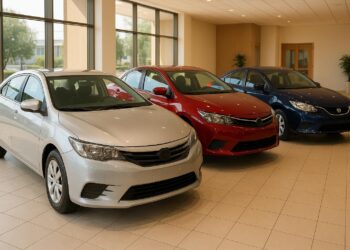Kenya is rapidly transitioning its transport sector, moving away from a traditional reliance on second-hand Internal Combustion Engine (ICE) vehicles to embracing a promising electric vehicle (EV) future. This shift, often dubbed the ‘E-Mobility Revolution,’ is characterized by three key pillars: a rising number of dedicated dealerships, a commitment to local assembly, and a nationwide effort to build a robust charging infrastructure.
This transition is not just an environmental choice but a sound economic one, promising lower running costs and job creation.
1. The Local Assembly Boom: Building the Future at Home
For years, the automotive sector in Kenya was dominated by the importation of used vehicles, but the EV revolution is creating a strong incentive for local manufacturing and assembly, aligning with the “Buy Kenya, Build Kenya” initiative.
The Rise of EV Assembly Lines
Several companies are now investing in assembling electric vehicles and motorcycles locally, taking advantage of government incentives like duty exemptions on imported parts. This effort is crucial for making EVs more affordable and tailored to local road conditions.
- Electric Two-Wheelers: The most significant strides have been made in the boda-boda (motorcycle taxi) sector. Companies like Spiro are leading the charge, establishing assembly plants along major roads and deploying thousands of electric bikes. This shift directly impacts the livelihoods of thousands of riders by cutting down on daily fuel costs.
- Buses and Cars: Beyond two-wheelers, local players like BasiGo are assembling electric buses, transforming public transport. Other local assemblers are also lining up to produce affordable electric cars from imported semi-knocked-down (SKD) kits, which promises to drive down prices significantly in the coming years.
Why Local Assembly Matters: Local production reduces the reliance on expensive fully-built imports. This cuts down on shipping costs and tariffs, offering a potential 40% reduction in vehicle costs, making electric transport accessible to the average Kenyan.
2. Expanding Charging Stations: Eliminating ‘Range Anxiety’
One of the greatest barriers to EV adoption globally is ‘range anxiety’—the fear of running out of charge far from a charging point. Kenya is tackling this head-on with an ambitious plan to electrify its transport corridors.
The Nationwide Charging Grid Initiative
The government, in partnership with utility companies and the private sector, has initiated a multi-billion shilling program to establish a comprehensive public charging network.
- Key Rollout: The initial phases focus on high-traffic areas and major transport routes from Mombasa to Busia. Kenya Power, the national utility, is at the forefront, planning to install dozens of fast-charging stations across six key counties: Nairobi, Mombasa, Kisumu, Nakuru, Eldoret, and Nyeri.
- Target Infrastructure: The long-term goal is to install thousands of public charging points nationwide by 2030, with stations planned for every 25 kilometers along the main motorways.
Practical EV Ownership Tip
For drivers and fleet operators, knowing your charging standard is vital. Kenya primarily uses the Type 2 connector for AC (slow/home) charging and the CCS or CHAdeMO standard for DC (fast/public) charging.
- Actionable Tip: If you own an EV, invest in a quality home charging unit (Level 2 AC charger) for overnight charging, which is generally the most cost-effective way to refill your battery. For long journeys, locate the upcoming fast-charging stations using a reliable EV charging app. You can read more here about EV charging protocols and safety guidelines.
3. Dealerships and Imports: Broadening Consumer Choice
While local assembly is gearing up, the current EV market is still heavily reliant on imports, giving rise to new specialized dealerships.
New Dealers and Import Options
Traditional dealerships and new EV-focused showrooms are emerging, offering a variety of electric models ranging from compact hatchbacks to luxury SUVs. The increased availability of new and high-quality used electric cars from the global market is giving buyers a real alternative to traditional petrol cars.
- Diversifying the Market: Companies are importing popular models like the Nissan Leaf, BYD Atto 3, and various Tesla models, catering to the growing appetite for zero-emission vehicles. For drivers looking to explore sustainable mobility, EV24.africa offers diverse import options for electric cars, expanding choices in the personal and commercial e-mobility segments.
Integrating ICE and EV Markets: For buyers who are still weighing their options, the traditional second-hand market remains robust. Sites like auto24.co.ke feature a mix of high-demand petrol models like the Toyota Vitz and Honda Fit, side-by-side with an increasing number of imported electric vehicles. This platform helps buyers compare overall purchase prices and estimated running costs between the two segments.
Conclusion: An Electrifying Future Awaits
Kenya’s EV revolution is a multifaceted movement. It is being powered by progressive government policies that favor local manufacturing, massive infrastructure investments to build a comprehensive charging network, and an eager consumer base looking for lower operational costs.
This transition is set to not only reduce carbon emissions and dependency on fossil fuel imports but also cement Kenya’s position as a regional leader in clean energy and manufacturing.
For the latest updates on EV policy changes, charging station maps, and reviews of the newest electric cars on Kenyan roads, keep visiting autoskenya.com and automag.co.ke.




